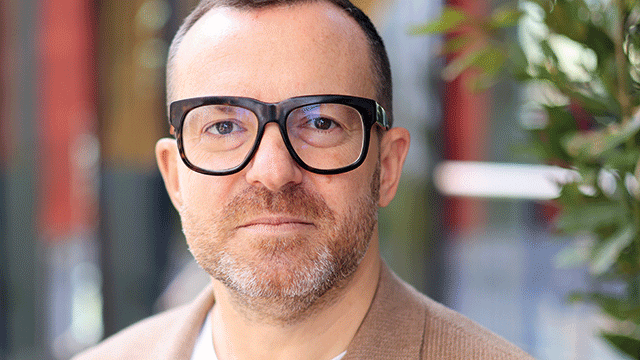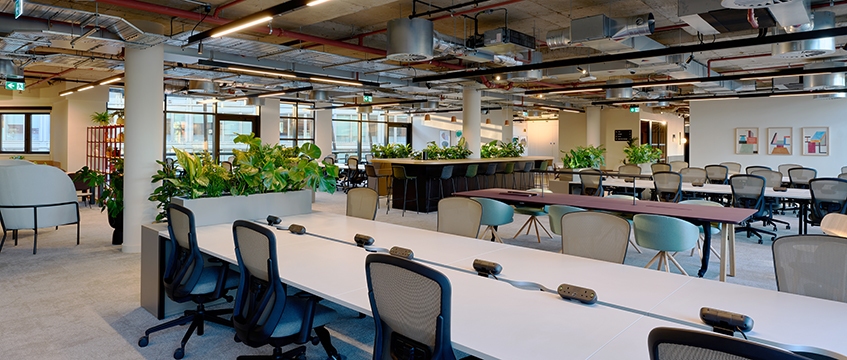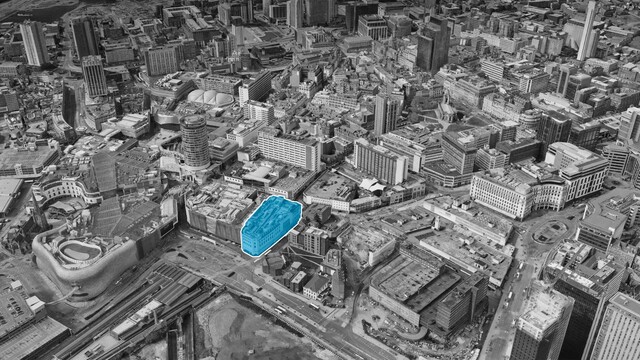Capital placemaking: the importance of creating a sense of place in London
Placemaking has improved the environment in selected parts of the capital – but does more need to be done to join the dots and connect the sense of place between London’s districts? And who should take on the job?
There are three key reasons make placemaking a priority for the capital, reckons Mark Davy, founder of placemaking specialist Futurecity: the failure of traditional brownfield development models, the rapid rise of creative industries and the redrawing of London through what he terms creative districts – new, privately-developed, large-scale brownfield sites.
The convergence of these three factors has led savvy urban developers to experiment with placemaking ideas across the capital from Greenwich Peninsula to Wembley Park. However, Davy stresses that despite the success and investment in placemaking by the private sector, good placemaking also requires engagement and involvement with the wider community.
Placemaking has improved the environment in selected parts of the capital – but does more need to be done to join the dots and connect the sense of place between London’s districts? And who should take on the job?
There are three key reasons make placemaking a priority for the capital, reckons Mark Davy, founder of placemaking specialist Futurecity: the failure of traditional brownfield development models, the rapid rise of creative industries and the redrawing of London through what he terms creative districts – new, privately-developed, large-scale brownfield sites.
The convergence of these three factors has led savvy urban developers to experiment with placemaking ideas across the capital from Greenwich Peninsula to Wembley Park. However, Davy stresses that despite the success and investment in placemaking by the private sector, good placemaking also requires engagement and involvement with the wider community.
He says: “The life blood and energy of our global city comes from the 9m people who live, work and play here. We need to ditch the ‘build it and they will come’ mentality and instead work with the community to help them participate and contribute to the development of our environment, not just through the traditional method of consultation in advance of planning, but as active placemaking partners.”
He suggests that London would do well to heed North American author Jane Jacob’s observation that: “Cities have the capability of providing something for everybody, only because, and only when, they are created by everybody.”
Davy is concerned that a diverse range of property professionals have appropriated the placemaking term, offering an increasingly bewildering array of products. He says: “We need to get to a place where new practitioners can sit alongside architects, planners and other consultants and where new methods are seen as relevant.”
He says there also needs to be a more cooperative relationship between elected councillors, council officers, planners, property developers, the cultural sector and local communities. It may sound like a tall order, but Davy believes it is attainable.
But he warns: “Placemaking shouldn’t be regulated, packaged and imposed, otherwise it will become simply another product offered by the same disciplines that already serve the industry in London.”
What do other members of the London Forum think?
Steven Skinner, transactional director, HB Reavis UK
“Getting placemaking right goes beyond the rather generic approach of an independent coffee shop and a destination eating venue. With larger scale mixed-use developments, there’s an opportunity to design a place that has its own unique identity and can appeal to a wide range of users. This is missing from many schemes. The role of placemaking should start from the site itself and its history and context in order to create authenticity. It can then be shaped by the potential stakeholders around the development.”
Simon Cookson, real estate partner, DLA Piper
“Placemaking means different things to different people but at heart it’s about making London a fantastic place to live and work. Local authorities, government and developers all have a role. The latter need to be able to work from the outset with the local planning authority to ensure that the project fits into the local environment. In this light, ‘joining the dots’ shouldn’t be the priority. Rather, government should be incentivising developers and other stakeholders to help ensure that London continues to produce separate but interconnected ecosystems. They are distinct, but they’re all part of London, and London’s strength is in its diversity.”
Bill Page, business space research manager, LGIM Real Assets
“The term placemaking represents so much of importance in urban environments but is becoming jargon through overuse. What it really means is creating and maintaining community environments that are a forethought – and anchor – to development, not a tokenistic afterthought. At the London level, joining the dots between existing business districts would involve more than one department from more than one borough to work with a diaspora of private owners. The mayor’s office has the ability to bring these parties to the table but success usually requires a single champion with the vision and gravitas – and vested interest – to drive action.”
Denizer Ibrahim, special projects director, BNP Paribas Real Estate
“Placemaking, at its core, goes far beyond real estate or architecture and has to be a shared enterprise. Communities, the mayor’s office, landowners and businesses all have an equal role to play. We already have examples of successful branded micro-communities, such as Seven Dials and St James’. These products of conscious reinvention blend heritage with contemporary vision and have delivered numerous economic and social benefits.
“However, the majority of London’s districts aren’t created or branded – they evolve organically in response to how people live, work and play – activities that, with the rise of the millennial urban dweller, are converging, making the role of the spaces in-between ever more important. As London grows, so does the role of placemaking.”
Jace Tyrrell, chief executive, New West End Company
“London is home to many millions of residents, workers and visitors all using the same spaces for very different purposes. The capital needs to work for them all and that means placemaking needs to be world-class. Working in partnership is key – and that’s often where business improvement districts can have a huge impact. Although each is responsible for different localities, we are constantly collaborating, and coordinating multiple stakeholders, to ensure we’re delivering a London that competes with other global destinations.”










